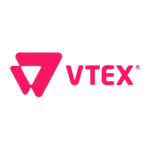Description

Anywhere Commerce+

VTEX
Comprehensive Overview: Anywhere Commerce+ vs VTEX
Anywhere Commerce+ and VTEX are platforms that cater to e-commerce and digital commerce needs, but they have different focuses and strengths. Here's a comprehensive overview:
Anywhere Commerce+
a) Primary Functions and Target Markets:
-
Primary Functions: Anywhere Commerce+ is a versatile platform intended to support businesses in establishing and managing online commerce operations. Its primary functions include developing personalized and scalable online stores, managing payments, and ensuring secure transactions. The platform emphasizes mobile, point-of-sale (POS), and online payment solutions, enabling businesses to engage in omnichannel retail.
-
Target Markets: Anywhere Commerce+ primarily targets small to medium-sized businesses (SMBs) and retail companies that require flexible and integrative solutions for e-commerce transactions. It is well-suited for merchants looking to create a seamless customer experience across mobile, online, and in-store channels.
b) Market Share and User Base:
-
Market Share: As a tool focusing primarily on SMBs and specific omni-channel solutions, its market share is growing but tends to be overshadowed by larger e-commerce platforms that serve broader functionalities.
-
User Base: The user base mainly consists of businesses looking for a cost-effective and integrated tool to facilitate e-commerce transactions across multiple channels, with a particular emphasis on mobile-enabled commerce.
c) Key Differentiating Factors:
- Omnichannel Payment Solutions: Offers distinct capabilities for businesses seeking robust solutions for integrating mobile and in-store payments with online systems.
- Focus on Flexibility: Provides a level of flexibility that allows businesses to tailor the solutions to their specific needs, facilitating easier customization and better integration with existing systems.
VTEX
a) Primary Functions and Target Markets:
-
Primary Functions: VTEX is a cloud-based digital commerce platform designed to power digital transformation for large retailers and brands. Its offerings include commerce, marketplace, and order management solutions. VTEX supports B2C, B2B, and marketplace business models, providing tools for creating unified shopping experiences.
-
Target Markets: VTEX primarily targets medium to large enterprises and retailers across diverse sectors globally. Companies with complex and large-scale operations that require an integrated platform to manage multi-channel commerce processes are its primary audience.
b) Market Share and User Base:
-
Market Share: VTEX has been expanding its presence significantly, especially in Latin America and increasingly in global markets. It is regarded as one of the leaders in digital commerce solutions in regions where it has a strong foothold.
-
User Base: Includes large retailers and brands seeking a comprehensive solution that can handle multi-channel sales strategies. Its growing user base is a testament to its scalability and effectiveness in managing large-scale operations.
c) Key Differentiating Factors:
- Multi-Tenant Architecture: VTEX stands out with its multi-tenant architecture that provides continuous updates and improvements without disrupting customers' operations.
- Marketplace Integration: Provides robust capabilities for creating and managing third-party marketplaces, allowing businesses to expand their e-commerce ecosystem.
- Focus on Large Enterprises: Its focus and capabilities are particularly oriented towards servicing larger enterprises with complex e-commerce needs.
Comparison
- Breadth of Functionality: VTEX tends to offer broader features tailored towards larger enterprises with complex operations, whereas Anywhere Commerce+ focuses more on flexible, integrated payment solutions across multiple channels.
- User Focus: Anywhere Commerce+ aims at SMBs and specialized retail scenarios, whereas VTEX targets large retailers with extensive operational needs.
- Global Presence: VTEX has a notable global reach, especially powerful in Latin America, while Anywhere Commerce+ continues to build its niche market presence.
Overall, the choice between the two will largely depend on business size, the complexity of e-commerce needs, and the specific functionalities sought by the enterprise.
Contact Info

Year founded :
Not Available
Not Available
Not Available
Not Available
Not Available

Year founded :
2000
Not Available
Not Available
United Kingdom
Not Available
Feature Similarity Breakdown: Anywhere Commerce+, VTEX
As of my last update, I don't have the latest technical specifications for the exact products "Anywhere Commerce+" and "VTEX," but I can provide a general comparison based on typical features associated with e-commerce platforms. Both of these platforms are designed to facilitate online sales and provide businesses with tools to manage their online stores.
a) Core Features in Common
-
Product Management:
- Both platforms likely offer robust product management capabilities that include adding, editing, and categorizing products. They likely support product variations and inventory management.
-
Shopping Cart and Checkout Process:
- Both platforms offer shopping carts and customizable checkout processes to streamline the purchasing experience.
-
Payment Gateway Integration:
- Integration with various payment gateways for processing transactions is typical to provide flexibility to businesses and their customers.
-
Order Management:
- Tools for order processing, tracking, and management are essential features likely found in both platforms.
-
Customer Management:
- Features for managing customer information, segmentation, and customer service interactions are typically available.
-
Analytics and Reporting:
- Solutions usually provide analytics and reporting tools to track sales, customer behaviors, and other key performance indicators.
-
Marketing Tools:
- Both may offer marketing integration options such as email marketing, SEO tools, promotions, and discounts.
-
Multi-channel Selling:
- Ability to sell across multiple channels, such as online marketplaces and social media, is common.
b) User Interface Comparison
-
Design and Layout:
- Anywhere Commerce+ and VTEX are likely to have modern, intuitive user interfaces designed to be user-friendly so that even users with minimal technical skills can navigate effectively.
-
Customization:
- Both platforms probably allow significant customization of the user interface to align with brand identity, though the degree and ease of customization can vary.
-
Dashboard:
- Expect comprehensive dashboards on both platforms providing a quick overview of key metrics and business activities. Differences may exist in how the information is displayed or accessed.
c) Unique Features
-
Anywhere Commerce+:
- Without up-to-date specifications, it’s speculative, but Anywhere Commerce+ might offer unique solutions such as specialized mobile commerce capabilities, enhanced offline commerce integrations, or unique APIs for specific business processes.
-
VTEX:
- VTEX is known for its robust native marketplace capabilities, allowing businesses to create their own marketplaces. Additionally, VTEX might offer powerful B2B features, collaborative commerce, and a strong API for integrating various services seamlessly.
It’s important to consult the latest product documentation or directly contact the service providers for an up-to-date, accurate comparison tailored to the specific needs and recent developments of each platform.
Features

Not Available

Not Available
Best Fit Use Cases: Anywhere Commerce+, VTEX
Anywhere Commerce+
a) Best Fit Use Cases for Anywhere Commerce+:
-
Omnichannel Retailers:
- Description: Anywhere Commerce+ is particularly well-suited for businesses that need a seamless integration of online and offline retailing. It excels in providing a unified commerce experience where users can easily transition between different channels.
- Examples: Clothing retailers that offer both in-store and online shopping experiences, allowing for actions like in-store pickups for online orders.
-
Global Brands:
- Description: Businesses with a significant presence in multiple countries can benefit from its comprehensive international capabilities, such as multi-currency, multi-language, and multi-taxation system support.
- Examples: Brands with a global footprint that need region-specific customization without sacrificing overall consistency.
-
Subscription-Based Services:
- Description: Companies that rely on a subscription model can use Anywhere Commerce+ to manage recurring billing and automate different parts of the subscription lifecycle.
- Examples: Subscription boxes, software-as-a-service (SaaS) platforms.
b) Scenarios for Choosing Anywhere Commerce+:
- Custom Experience Needs: When a business requires highly personalized user experiences that can adapt to individual customer behaviors in real time.
- Complex Sales Processes: Where sales processes are complex and benefit from integrated CRM, ERP systems for better management and insights.
VTEX
b) Best Fit Use Cases for VTEX:
-
B2B and B2C Confluence:
- Description: VTEX excels in scenarios where companies need to manage both B2B and B2C operations on a single platform, offering distinct experiences while maintaining efficiency.
- Examples: Manufacturers who sell directly to consumers and to retailers.
-
Marketplaces:
- Description: VTEX has strong capabilities for businesses looking to create or expand their marketplaces, giving them tools to manage multiple vendors effectively.
- Examples: Retailers looking to expand their product offerings by allowing third-party sellers on their platform.
-
Fast-Growing E-commerce Ventures:
- Description: Suitable for e-commerce businesses experiencing rapid growth, VTEX supports scalability and microservices architecture, which is critical for handling increased demand.
- Examples: DTC (Direct-to-Consumer) brands that need robust solutions to grow their operations quickly.
d) Industry Verticals and Company Sizes:
-
Anywhere Commerce+:
- Industry Verticals: Ideal for retail, fashion, luxury goods, and sectors where customer experience across channels is paramount.
- Company Sizes: Suitable for medium to large enterprises that need comprehensive commerce solutions with personalized customer experiences.
-
VTEX:
- Industry Verticals: Highly effective for retail, manufacturing, and wholesale, especially where marketplace functionality and scalability are critical.
- Company Sizes: Best for large enterprises and fast-growing SMEs that require robust e-commerce capabilities with marketplace integration.
Both platforms cater to specific needs and scenarios, making their selection dependent on the particular business challenges and objectives an organization faces.
Pricing

Pricing Not Available

Pricing Not Available
Metrics History
Metrics History
Comparing undefined across companies
Conclusion & Final Verdict: Anywhere Commerce+ vs VTEX
Conclusion and Final Verdict: Anywhere Commerce+ vs. VTEX
a) Best Overall Value
Determining the best overall value between Anywhere Commerce+ and VTEX depends on the specific needs and priorities of the business. However, considering factors such as scalability, features, ease of integration, and overall ecosystem, VTEX generally offers superior overall value for larger businesses and enterprises looking to expand their digital commerce capabilities with robust ecosystem support. On the other hand, Anywhere Commerce+ might offer better value for small-to-medium businesses seeking flexibility and cost efficiency.
b) Pros and Cons
Anywhere Commerce+
-
Pros:
- Flexibility: Highly customizable to meet specific business needs.
- Cost-Effective: Generally offers competitive pricing, especially attractive for small-to-medium businesses.
- User-Friendly: Easy-to-use interface with simplified processes, reducing the need for extensive training.
- Decent Integration Capabilities: Offers a good level of integration with other systems, although perhaps not as extensive as VTEX.
-
Cons:
- Scalability: Might face challenges when scaling up due to limitations in handling extremely large product catalogs or traffic.
- Feature Limitations: May lack some advanced features and analytics provided by VTEX, which can be significant for enterprises.
- Ecosystem Support: Smaller ecosystem implies fewer third-party apps and potentially less community support.
VTEX
-
Pros:
- Robust Feature Set: Comprehensive features, including advanced analytics, AI capabilities, and headless commerce options.
- Scalability: Excellent ability to handle large-scale operations, suited for enterprises with extensive product lines and high traffic.
- Strong Ecosystem: Extensive integration options and robust community support, providing flexibility and enhanced functionality.
- Global Reach: VTEX's presence and capability support international expansion with multi-currency and multi-language functionalities.
-
Cons:
- Cost: Typically comes with a higher price tag, which might not be feasible for smaller businesses.
- Complexity: More advanced features may require dedicated resources or expertise to fully utilize.
- Implementation Time: May have longer implementation timelines due to the extensive configurations and customizations available.
c) Recommendations
-
Assess Business Needs: Businesses should carefully evaluate their specific needs, considering factors like the size of operations, budget, and desired features. Enterprises with complex requirement sets and international aspirations may find VTEX more aligned with their goals.
-
Consider Budget vs. Feature Set: For businesses with tight budgets, Anywhere Commerce+ is a viable option, delivering essential functionalities without the high cost. However, if advanced features are non-negotiable, VTEX might warrant the investment.
-
Scaling Considerations: If scalability and the ability to rapidly adapt to market changes are essential, VTEX stands out as the better choice. Anywhere Commerce+ could still suffice for businesses with more modest, stable growth projections.
-
Trial and Support Evaluation: If undecided, businesses may benefit from taking advantage of free trials or demos offered by both platforms to evaluate usability and support. Additionally, considering feedback and reviews from similar businesses can provide insights into the potential performance and pitfalls of each platform.
Ultimately, the decision should align closely with both immediate business needs and long-term strategic goals, factoring in operational priorities and financial resources.
Add to compare
Add similar companies




